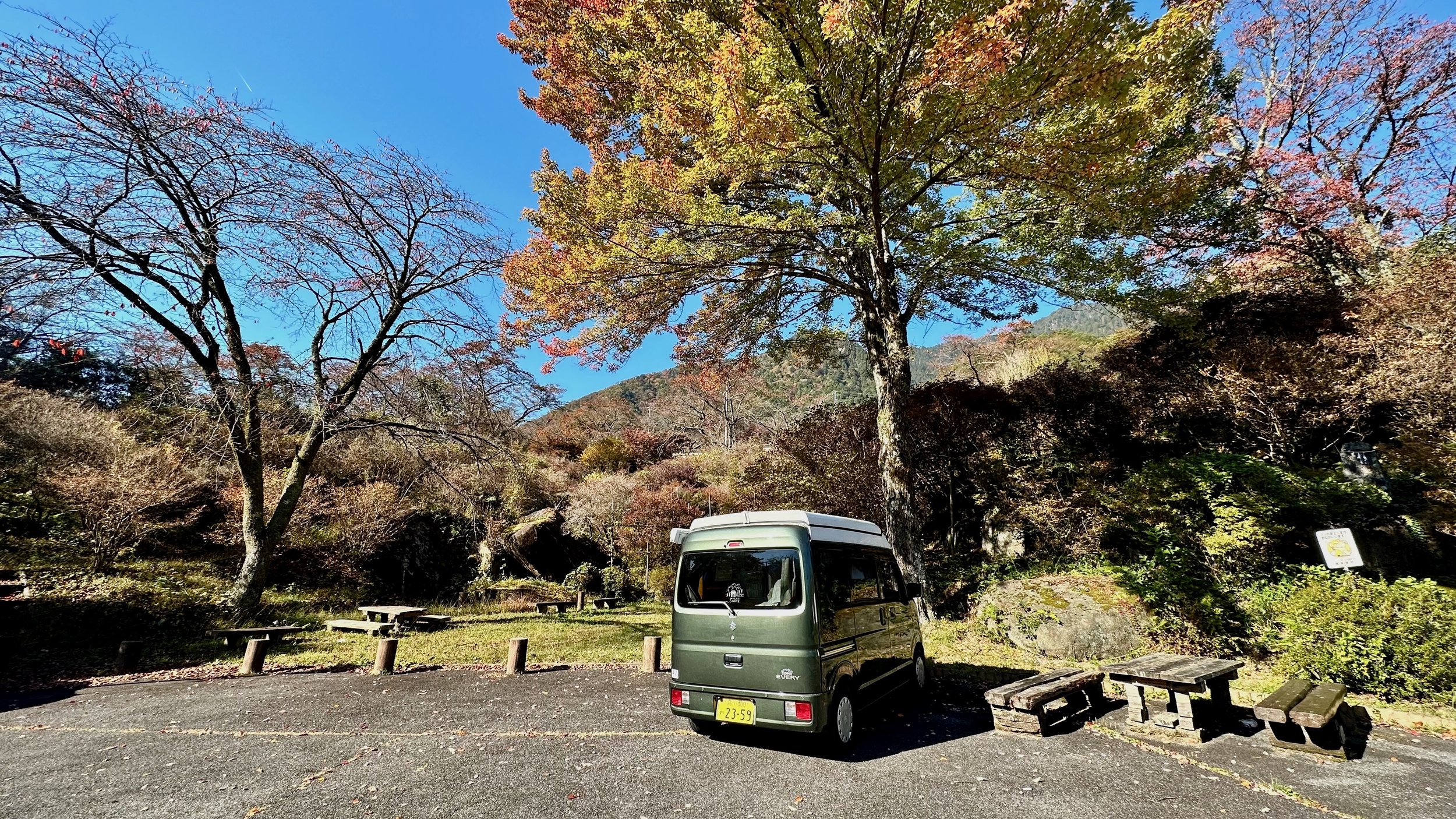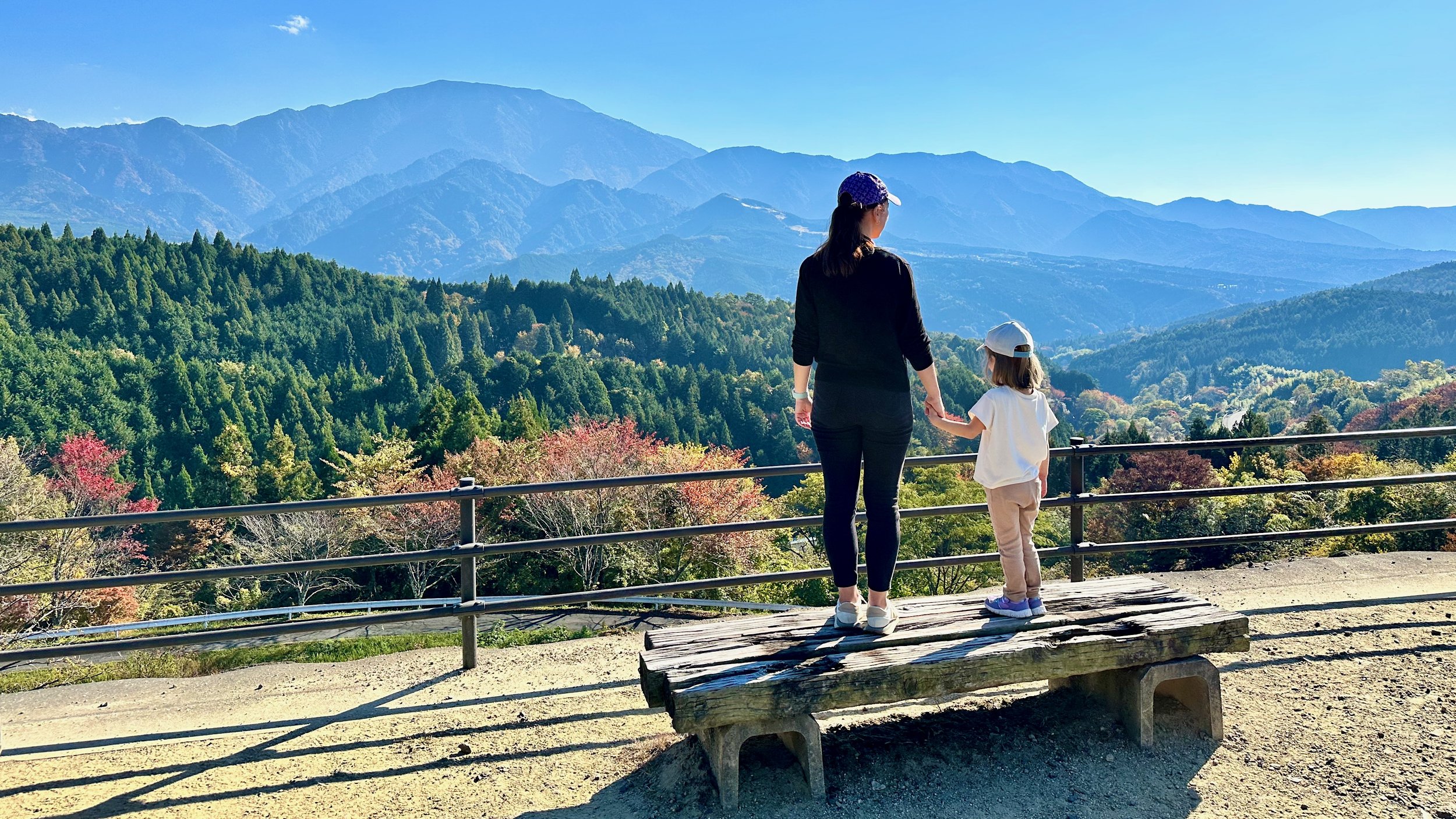Van Life Chronicles: Exploring Gifu in 7 Days「Day 5: Tsumago & Magome」
We woke up as usual, bathed in sunlight in a very quiet area. We took our time to slowly enjoy our last morning in Gifu Prefecture, although technically we were just 3km across the border in Nagano Prefecture. After tidying the van as we do every morning, we drove less than 10 minutes to discover our first destination of the day: Tsumago, the 42nd station on the old Nakasendo road.
Tenpaku Park (Azalea Garden)
The term "Nakasendo" (中山道) translates to "Central Mountain path".
Exploring the old Nakasendo in Nagano's Kiso Valley is like stepping into Japan's ancient past. Picture samurai, geishas, and powerful shoguns walking these paths centuries ago! This historic route, spanning 534km from Kyoto to Tokyo, once hosted 69 post towns (Juku) for tired travelers. While parts are now modern highways, sections like Tsumago to Magome retain that old-world charm. Walking these trails felt like time-traveling through history – an incredible experience.
📍 Tsumago-Juku
Tsumago thrives as an immaculately preserved post town along the old Nakasendo route, offering a captivating glimpse into Japan's past. Stepping into this historical gem, visitors witness a remarkable dedication to recreating the Edo Period ambiance. The absence of cars during the day and the discreet concealment of phone lines and power cables immerse travelers in an authentic atmosphere, transporting them to an earlier era.
Preserving its Honjin and Wakihonjin, Tsumago revives the essence of the post town life. The Honjin, catering to government officials, and the Wakihonjin, offering lodging to other travelers, echo the town's historical significance. Additionally, visitors can explore the office where laborers and horses were once rented to aid travelers on their journey.
With numerous minshuku (cozy guesthouse) and ryokan (luxurious inn) accommodations, a stay in Tsumago further enriches the experience, creating an illusion of stepping out of the modern world.
For those with time to spare, hiking the well-preserved trail from Tsumago to Magome along the former Nakasendo route is highly recommended. This 3-hour hike trail, clearly marked in Japanese and English, allows for an enchanting journey through history.
📍 magome-Juku
For generations, the Nakasendo Road bridged Tokyo's Nihonbashi to Kyoto's Sanjo Ohashi, with Magome-juku as the 43rd station, positioned roughly 332 km from Tokyo.
Magome-Juku embodies Edo-period nostalgia. Renowned for its Michelin Green Guide rating, Magome's steep terrain led to its name, indicating a place where horses halted due to the challenging ascent. The cobblestone streets, lined with traditional houses, museums, and shops, recreate the Edo-era ambiance vividly.
Preserving 400 years of history, Magome thrives as a functioning town blending past and present. Visitors encounter local crafts, cafes, and museum, while private residences maintain authenticity amid the lively atmosphere.
For an immersive experience, guests can stay at a guesthouse, observing the town's serene moments. The viewpoint leaving town offers breathtaking vistas of the Nakasendo's picturesque landscapes, waterfalls, and preserved farmhouses.
📍 Magome vs. Tsumago: A visitor’s Perspective
Magome tends to have a more touristy ambiance compared to Tsumago. With a bustling main street lined with souvenir and food stalls, Magome attracts more visitors, especially on weekends and national holidays. It offers a vibrant atmosphere with numerous shops and activities, making it an exciting destination for visitors.
On the other hand, Tsumago maintains a quieter and more authentic feel. Suffering less from fire damage historically and protected by the government since the mid-1970s, Tsumago provides a more serene and preserved setting. Its delightful main street, closed to traffic, showcases wooden craft shops, noodle restaurants, and historic inns, offering visitors a glimpse into a bygone era without the bustling tourist crowds found in Magome.
In summary, we adored both experiences. tsumago and Magome showcase well-preserved Edo-era buildings and historical significance. However, their contrasting atmospheres cater to different preferences: one more more authentic and quieter, with that charming, tucked-away vibe, like uncovering a local treasure. and another more vibrant and bustling experience with its steep streets and breathtaking mountain panoramas, wrapped up our Gifu journey in an absolutely spectacular way.
magome-juku viewpoint
📍 starting our journey back
We didn't want to take the highway back home but neither to endure a straight 10-hour drive to Tokyo. So, we decided on a 24-hour mid-route break in one of our favorite spots: Fujiyoshida. It was about a 5-hour drive, including a 10-minute break every hour for driving shifts.
then, Around 9PM, following dinner and our daily onsen routine (we revisited the same one as the day before), we set off on our 5-hour journey from Gifu towards Mount Fuji.
Predictably, our daughter fell asleep within minutes, the onsen's calming effect working like a charm. We navigated through forests, small towns and along lakes until 2AM when we arrived at our amazing parking spot near Yamanaka Lake. To our delight, we were welcomed by three stags and deer, a magical start to our night!















































